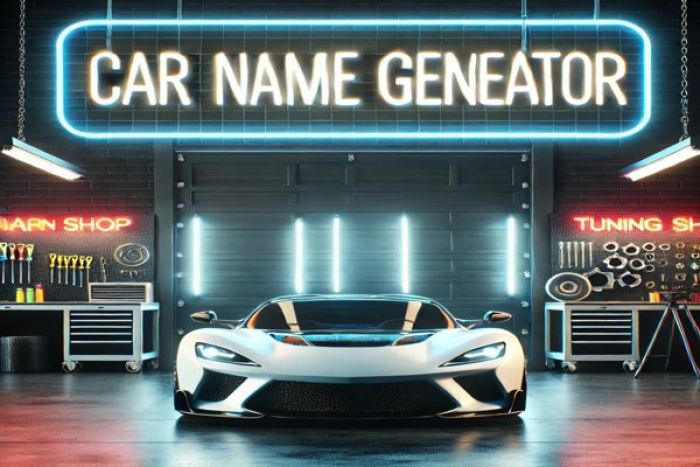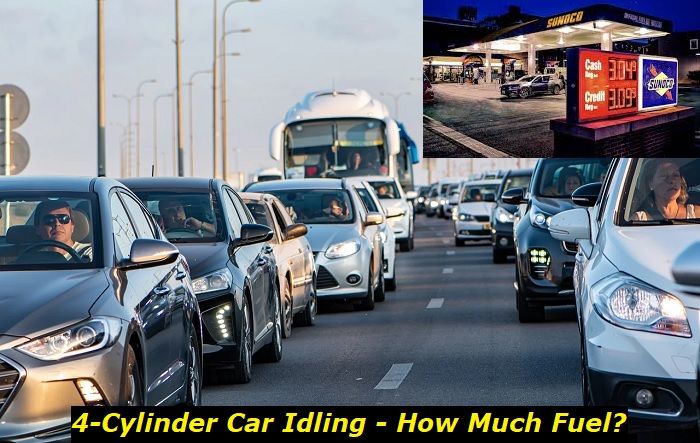It's not a pleasant experience at all to find your gas pedal not responding to you pressing it. Unfortunately, this is not that uncommon for modern vehicles that all come with electronic gas pedals, not wire-connected ones. And, not surprisingly, this may often happen after you jump-start your vehicle.
If the gas pedal isn't working after the jump start, it may cause serious damage to the ECU. But you should check other options that aren't as expensive to solve. Also, please remember that jump-starting a vehicle is not that easy and you should know exactly how to do that to prevent any damage to your vehicle.

In this article, I will explain to you the following:
- Can you damage something when jump-starting a car?
- Reasons your gas pedal is not working after jump-starting.
- What can you do to try and solve the problem?
- What to do if nothing helps and you need to drive?
- When will you need professional help?
Let's get started!
Jump-starting and car damage - what should you know?
When you connect something to your car battery, you should be very careful. One bad move and your ECU may be fried! Actually, this is what you may be thinking of right now when your gas pedal is not responding after you jump-started the car. But be patient and read this article to learn about other possible reasons for such a behavior.
So, the first question is whether you can damage something in your vehicle by jump-stating the vehicle in the wrong way. The answer is yes, you can.
Here's how to jump-start the car (in short):
- first, connect the cables to the healthy vehicle's battery (red to positive terminal and black to negative one);
- first, connect the red cable to the positive post of the dead battery (now both batteries are connected with the red cable between positive terminals);
- after that, connect the negative terminal to the unpainted body or engine part (I usually connect it to the engine because it's never painted);
- start the donor car and let it idle, you can also press the gas pedal to get its RPM higher than just idling;
- the charging time should be at least 5-7 minutes, after that, you can try starting the dead car;
- without disconnecting the cables, try starting the vehicle and see if it successfully starts;
- when the engine is started, you can disconnect the cables - black comes off first, then the red one.
Now, if you make a mistake and connect the positive terminal with the negative one or disconnect the positive first, you may damage something in both vehicles. The donor vehicle is also at risk of ECU being fried or something like that. So, you should be extremely careful and do everything according to this simple guide.
In terms of the damage itself, you may damage the battery control module, battery management system, the ECU, and other modules. The risks depend much on what kind of car you have and what control modules it has in it.
So, why doesn't your gas pedal work after jump-starting?
This problem is so unobvious that you refuse to believe the gas pedal is not reacting to you pressing it. The car is idling, everything seems to be OK, but when you try driving, it only goes slowly in D or R without accelerating. This seems so weird and disappointing that you just can't drive a car that has just been started!
This may only happen with the electronic gas pedal. There are several reasons why this may occur:
1) The problem with throttle sensors
The electronic gas pedal is controlled by the ECU and the control module uses the throttle position sensor and actuators to manage the RPM of the engine at every moment. So, if the throttle control sensor isn't working, the system may just cut off the gas pedal.
The throttle position sensor may have been fried because of voltage spikes in the electrical system of your car when jump-starting the battery incorrectly.
2) ECU glitch
It's not uncommon for modern ECUs to develop a glitch. This may happen because the voltage anomalies took place when the battery was low in your vehicle. The glitch may just be temporary and it may disappear the next time you start the car. But don't turn it off right now, let the car idle and charge the battery.
If the glitch doesn't disappear after just restarting the vehicle, you will need to reset the ECU by disconnecting the battery. I will tell you later in this article how to do it.
3) Gas pedal sensor issues
This is just another sensor that may have been damaged during voltage anomalies in the system. If this sensor is dead, the ECU will not know when exactly you are pressing the pedal and when you want to accelerate.
Fortunately, in the majority of vehicles, replacing this sensor is just a simple DIY job and the sensor itself shouldn't cost you a fortune.
4) ECU is fried
The last reason is not that optimistic. It's not that common for a car owner to fry the ECU or something like that when jump-starting the car. But I wouldn't say it's something extremely impossible.
If the low voltage was attacking the car for some time and then you jumped the vehicle incorrectly, it's quite possible that you just fried the ECU and need to solve this problem as soon as possible.
5) Some fuse is blown
Another problem you may want to check is if all fuses work correctly. Actually, I can't imagine any fuse that would only control the gas pedal, but new vehicles can surprise you with the precautions measures in their electrical systems.
What can you do to try and solve the problem?
First of all, don't panic because this will not help you at all. Let the car idle for some time to charge the battery. Otherwise, if you just turn the engine off, you will certainly not be able to start it again.
When the battery is charged at least a little, you can try disconnecting the battery. Here's how to do it:
- turn off the engine and open the hood;
- locate the battery and get a wrench of the needed size;
- disconnect the negative terminal;
- then disconnect the positive terminal;
- let the car sit like that for 10 minutes or so;
- connect the positive then the negative terminal;
- try starting your car and see if this helps.
But if you see a check engine light or some other warnings on the dash of your car, it's likely that some electronic part is broken and needs replacement. In this case, you will need an OBD2 scanner to read the code and then you will have ideas on how to solve the issue.
Unfortunately, diagnosing sensors and the ECU is not a DIY task. So, if you can't solve the problem by hard reset, you will need professional help.
Can you drive the car somehow if the gas pedal isn't working?
Well, there is nothing much you can do to drive normally but you can still drive the vehicle to the nearest repair shop to the dealership, or even to your garage if you have enough time for this.
First of all, you can try driving using the idle speed of the engine. Here's how you can do that:
- turn on the engine and let it idle a little to warm up;
- put the transmission in D and release the brake pedal;
- your car is now moving, but you can't accelerate, so your journey is going to be long;
- also, avoid steep hills on your way because your car may not climb in this condition.
Your D and R modes will work but you will not be able to accelerate using the gas pedal. This will let you drive at a speed of about 5 MPH. But it's at least something.
If you are driving a manual car, you can start driving with the first gear, and then turn to the second one. This will let you drive a little faster than in an automatic vehicle.
Also, you can try using the cruise control buttons. If your cruise control has no lower limit of speed, you can turn it on and use the Plus button to achieve the needed speed. This may be pretty annoying in the city traffic though. But this will let you drive much faster.
The last option is to use the tow truck service. This is the fastest but not the cheapest way to get your vehicle to the dealership.
What should you do if nothing helps?
If none of the tips given above works for you and you can't move your vehicle, then just call a tow truck and get the car delivered to the dealership or one of the independent shops. Let professionals look at the vehicle and find the actual reason for the problem. You should describe the entire problem and how it started to avoid paying extra for the inspection.
Remember that modern car electronics may not be tolerant of any actions of an unskilled mechanic. So, avoid repairing your vehicle on your own unless it's just a battery reset or some minor issue you can easily handle.
Final thoughts
It's important to always act professionally when it comes to your car and its technical problems. If you press the gas pedal and nothing happens, it's very likely that you will need some professional help. But before this, you can try disconnecting the battery. This may allow you to reset the ECU and solve the problem.
Of course, if this happened right after you jump-started the car, chances are your vehicle has experienced a serious problem and it needs to be inspected correctly. Otherwise, you just won't be able to drive it.
If you want to share your experience of dealing with this problem, just write below in the comments!
About the authors
The CarAraC research team is composed of seasoned auto mechanics and automotive industry professionals, including individuals with advanced degrees and certifications in their field. Our team members boast prestigious credentials, reflecting their extensive knowledge and skills. These qualifications include: IMI: Institute of the Motor Industry, ASE-Certified Master Automobile Technicians; Coventry University, Graduate of MA in Automotive Journalism; Politecnico di Torino, Italy, MS Automotive Engineering; Ss. Cyril and Methodius University in Skopje, Mechanical University in Skopje; TOC Automotive College; DHA Suffa University, Department of Mechanical Engineering





Add comment